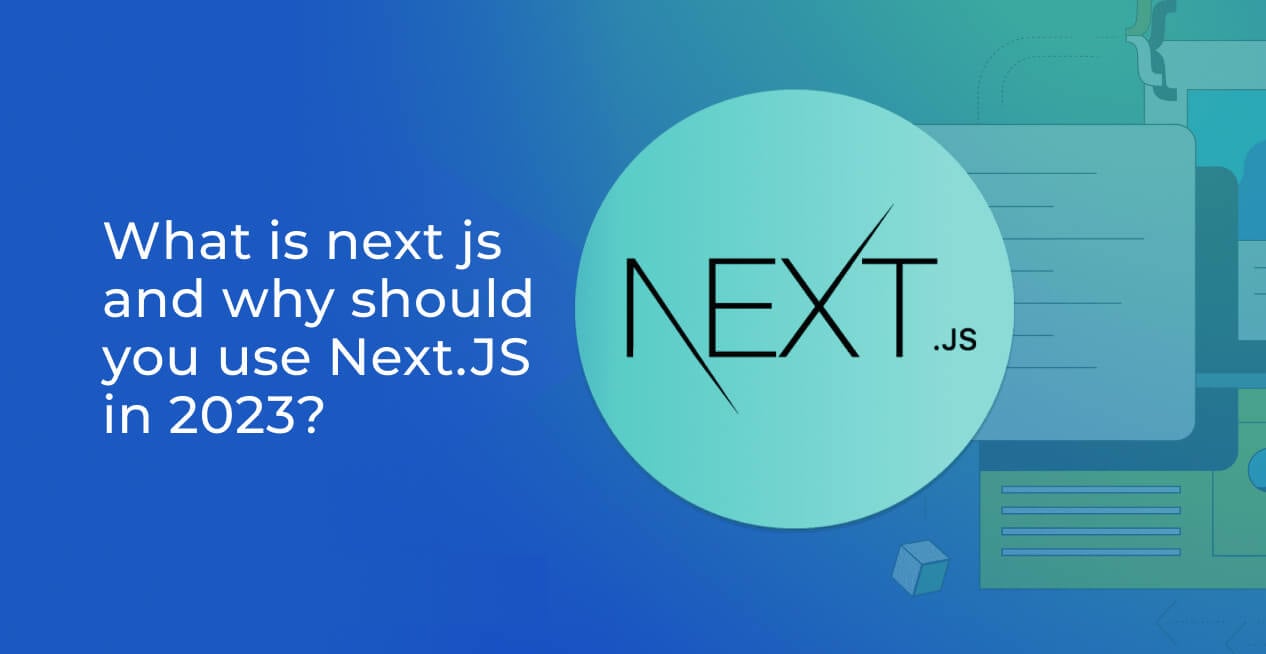Introduction
We are currently experiencing technological revolutions every other day. With new tech, new machine languages, computing techniques, and automation options, technology is being replaced in a blink of an eye. In the software development industry, a similar trend is being observed. Ever since Javascript was introduced in 1995, its applications and uses have only increased, creating a high demand for Java’s libraries and framework. A Javascript is a library of pre-written script code that facilitates the development of Javascript-based applications. A Java Framework, on other the hand, provides the flow development of a software application . There are numerous libraries and frameworks currently in use for handling a variety of digital tasks such as Data Visualisation, Database management, Data Handling, Forms, Animations, Math and string functions, etc. In this article, we will be talking about one such Java framework called Next Js.
What is Next JS and how is it different from React?
Next.js is a flexible React framework that gives you cohesive blocks that are required to create fast web applications. Introduced in 2016 by Vercel, Next JS is the most preferred frontend web development of 2022. This is because NextJs components enable developers to create full stack web applications by integrating the versatile React features and Rust based JavaScript tooling in the shortest time possible. Next Js is known for bringing the power of fullstack to frontend development.
When we say Next Js is a React Framework, a question often crops up which is – how is Next JS different from React? Well, React is a Javascript User Interface design library for single-page applications and Next JS is a framework built on React which enhances the web development experience by enabling the user to create apps. While React is used for creative user interfaces,Next.js contributes to this with additional features and functionality to React to make it easier for building certain types of web applications. These include not only simple and complex web applications but also SEO-friendly and blazing-fast websites. Next JS is also known for its benefits like server-side rendering and automatic code splitting
Why use Next JS?
Lately, Have you heard developers raving about the benefits of Next JS? They are not wrong. There are certain advantages of the Next JS framework which give it leverage over the other frameworks in the market. Both developers and businesses (small, medium, and large) are preferring Next JS as the go-to framework for developing with React. Given below are some of these advantages:
Server Side Rendering or SSR
Next JS is most popular for Server Side Rendering or SSR. Server-side rendering means that components that form the external, user-facing part of a website, are all first rendered on the server side. This also means that once the HTML code is delivered to the client browser, the user will straight away be able to access or read the content of the page since it has already been rendered before. This reduces page load time considerably and makes optimizing page’s load time very easy while leaving the developer to focus on creating the right components.
Delivers better SEO and crawlability
The SSR attribute of Next JS is also known to boost the SEO and visibility of a website. SSR increases the crawlability of the website which means that web crawlers can easily access all parts and content of a website via links. This is because the user end javascript need not be executed to see the page content. Unlike Static generation, Next JS ensures that the search engine gets HTML directly from the server instead of generating HTML while crawling.
This feature of Next Js is beneficial, especially for small businesses. Small businesses in the early years of their inception need to fervently work on their visibility and an SEO-friendly website helps achieve that.
Image Optimization
Next.js includes an extension to optimize images – as a result, each image on the website is optimized in size before it is served to the clients. The Next.js Image component, next/image, an extension of the HTML <img> element, has evolved for the modern web and increases Core Web vitals. These scores are an important measurement of user experience on your website and are factored into Google’s search rankings.
Third Party API Support
Next.js seamlessly supports API Routes, which enables any developer to easily create an API endpoint as a Node.js serverless function. Third-party APIs not only expand project possibilities but with the help of Next Js, helps create and own API routes.
Speed
Applications that Next JS builds are fast because of its smart attributes of server-side rendering and static generation. This efficient way of handling data and delivering them to the user while reducing page load time has made Next Js quite popular amongst developers, especially for their speed.
Few simple steps to start creating a Next Js App
The easiest way to create a Next JS App is to use the create-next-app Command Line Interface (commonly known as CLI’s ). CLI’s like Command Line interfaces is a text-based UI used to manage computer files and run programs while interacting with the computer.
Step 1: Use the CLI tool to create-next-app with the help of npm
$ npm install create-next-app
Step 2: Once the CLI has been installed, the next step is to provide a name for your project and call the tool(use prefix npx). The command for a music app should look something like this :
$ npx install create-next-app music-app
Step 3: Once the tool has finished initializing a blueprint of the project, the standard packages (package.json, package-lock.json, and node_modulescan) be availed along with a few other extremely helpful directories such as /pages, /public and /styles directories, as well as a next.config.js file. This makes it easier for users of Next Js to navigate through the framework quickly and conveniently.
Best Next Js examples
Next JS is becoming increasingly popular globally. With many household names adopting Next JavaScript for development, businesses and developers worldwide are realizing the hidden potential of developing with React and NextJS. Below are a few of the successful Next JS projects.
- Netflix.
- TikTok
- Twitch.
- Hulu.
- Notion.
- Target etc

Ever since 2020, Next JS has seen considerable growth in terms of adoption and use compared to frameworks like Gatsby and next which were also introduced during the same time next js was introduced.
Conclusion
Next JS is catching on. For its user-friendliness, resourcefulness, speed, and easy configuration Next JS is quite quickly becoming the framework of choice when it comes to developing brilliant websites and applications. Not many developers are proficient in the Next JS part of React development and those who are, charge enormous project fees. More and more developers should focus their skillset and learn the framework since it is the future of development.
JavaScript Development with OpenXcell
OpenXcell is a reliable reactjs development company and a well-known javascript development company who is gaining popularity amongst their competition. OpenXcell’s team of expert developers is equipped in JS for next and have a proven record of delivering quality solutions well on time. If you are a company looking to develop a state-of-the-art website or application with next js, get in touch with us today to discuss your requirements. We shall help you transform that vision into reality! Visit our website to hire the best React JS developers for your next Javascript project.










